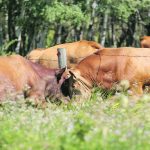Advances in the production of sexed semen have opened many doors in dairy and beef cattle production. It is another way producers can fine tune their management to potentially get higher returns. For many years, the dairy sector has focused on using sexed semen for heifers and top-end cows, the cows from which producers want […] Read more
Stories by Roy Lewis, DVM
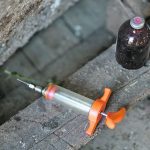
Producers should ask their vets about new medications
With global supply issues, manufacturing issues and transportation or distribution issues, the words “back order” can strike fear in the hearts of producers and veterinarians. The bigger a herd becomes, the more critical that veterinary product shortages become, so it’s critical to keep potential solutions in mind. Keeping an open line of communication with the […] Read more
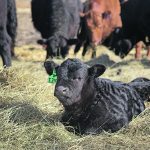
Survey participation has long-term benefits for industry
I encourage all producers to share their knowledge with cattle associations, researchers and related professional organizations because positive results are eventually returned. Accurate data going in leads to accurate data coming out. We may be inundated with surveys and questionnaires from industry groups but their ultimate goal is to gather information that will inform producers […] Read more
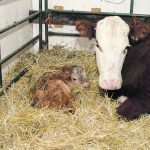
Monitoring first weeks of life will help ensure calf health
Paying close attention to calf health in the first week of life will decrease mortality and increase growth and returns to cow-calf producers. When we think about prevention of calf mortality, three main things come to mind, and I hope this review will eliminate the need for more calf treatments. For scours, the biggest factor […] Read more

Frozen tails major health issue when weather turns cold
This last cold snap has tested everything, including the power grid and the ability of watering bowls and anything with water in it to not freeze up. It has also tested the resiliency of our cattle, especially newborn calves. They’re usually fine, as long as they have adequate bedding and potentially an area to be […] Read more
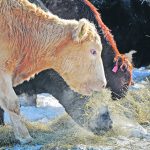
Thoughts on global warming, methane emissions, cattle
It is interesting that a specific topic — like global warming — can become all encompassing. Before we know it, deadlines are established and parameters are set, even with a one-sided view of the whole situation. Ruminants have been targeted in the global warming realm because of their methane production, which is a byproduct of […] Read more
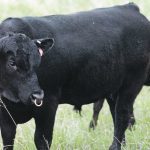
Evaluate semen as close as possible to breeding season
Many bulls are bought early in the year when most bull sales are held from February to April. For earlier sales, those occurring in December or January, purebred producers usually have semen evaluations carried out before bulls are delivered or picked up at the farm. When is the gap too big between when a semen […] Read more

Foot-and-mouth disease prevention is a group effort
Much work has been done on how to prevent and manage animal disease outbreaks. The Animal Health Emergency Management Project has developed strategies, and Alberta Beef Producers released a handbook in 2018. A foreign animal disease outbreak such as foot-and-mouth disease (FMD) or African swine fever could be particularly devastating. This article will focus on […] Read more

More must be done to ensure supply of local anesthetic
We are all experienced with the use of a local anesthetic when a cavity is filled at the dentist. Sensation goes away for the couple hours that we are numb, but the great thing is the pain is totally removed and there is no need for a general anesthetic. As well, many high-end surgeries such […] Read more

Sask. vet writes book that is educational and humorous
This column has lots to do with what I have written about in the past and yet, along with the education, will show you some of the humorous sides of a rural mixed animal practice in Weyburn, Sask. I am referring to a paperback book entitled, Don’t They Kick When You Do That? In the […] Read more

